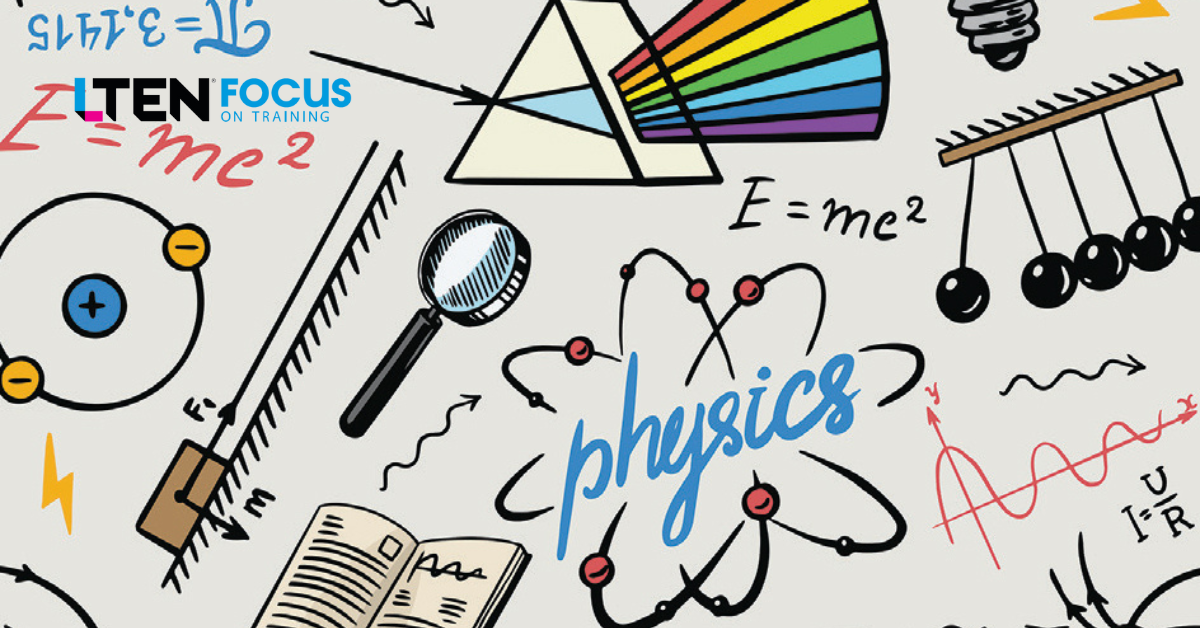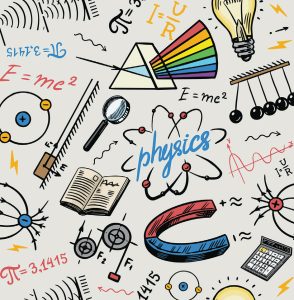
Innovations & Hot Topics – By Jaime Torchiana, M.S.
Releasing potential energy is always positive
 I loved Physics in high school. So much so that I thought for certain my career path would lead me to mechanical engineering. Until, that is, the Advanced Placement (AP) exam at the end of my senior year and this “bonus” type of question from quantum mechanics:
I loved Physics in high school. So much so that I thought for certain my career path would lead me to mechanical engineering. Until, that is, the Advanced Placement (AP) exam at the end of my senior year and this “bonus” type of question from quantum mechanics:
“A particle is trapped in a one dimensional potential given by = kx2/2. At a time, t=0the state of the particle is described by the wave function ψ = C1ψ1 + C2ψ2,where ψ is the eigen function belonging to the eigen value En. What is the expected value of the energy?”
At 17, with thoughts of prom and our division lacrosse championships that weekend, I wanted to write “Who cares?” I knew the answer was a positive number because of the equations involved – potential energy is always positive.
Challenging Assumptions
Fast-forward 25 years later and the laws of physics remain perfect. Releasing potential energy is always positive. So, how do we do it?
Let’s start by challenging five assumptions that exist in most learning organizations that trap value and unintentionally hinder results.
1. Investing in “core competencies” or competency-based training.
The investment in core competencies has been a headscratcher for me for several reasons. Competencies are based upon high-level behaviors, not business results. And, because they are broadly defined and ambiguous, they remain largely subjective and challenging to quantify. Finally, competencies have never moved the performance needle.
What do I do, as a sales representative, marketer, scientist or regulatory reviewer of a life sciences company, to demonstrate these competencies in a meaningful, role-specific way?
Untrap the value: Reinvest your competency program dollars to reengineer performance.
Traditionally, competencies are an investment in behaviors that are assumed to lead to business results, but without careful analysis, likely do not. Instead, begin with the end in mind – the business results the organization desires to achieve. Only by working backward can you capture the standards, tasks and behaviors required to achieve those results.
2. Investing in industry benchmark data. The false consensus and default effect.
The false consensus bias and default effect surface any time people cling to the standard option instead of exploring something better. More specifically, they fear missing out, or the stigma that comes when presenting anything contrary to consensus. So, they instead side with popular opinion.
Untrap the value: Assess the value of your current benchmarking initiatives.
Has the investment impacted business results? Is it worth the investment simply to learn what you already know – that sales folks aren’t closing as much as you’d like them to and there is a gap between marketing and sales? Or are you guilted into the spend because “everyone else in your industry is doing it”?
The gap between your good and great employees is larger than you may think, and the best way we’ve closed that variance is by making the mental model of your best transparent and transferrable. The advantage? Studying the best within your organization is affirmation that exceptional results are possible within your current structure and culture. It’s inherently motivating, cost-effective and immediately applicable.
3. The talent myth or attribution error.
“If I just got the right people on the bus.” “Our organization’s success is directly correlated to the number of high performers we can attract and retain.” Anyone that’s seen Moneyball, or has read Michael Lewis’ book of the same title, knows that winning can be accomplished with a team of high percentage “on-base” players.
Untrap the value: It is possible to drive value by replicating the results of your high performers without cloning their innate talent, abilities and competencies.
Consider excellence in the arts, sports arena, business world or elite armed services. No one was born the best violinist, quarterback, investor or Navy Seal. Instead, they learned to produce high value in their respective roles, and your steady performers can too.
4. The Dunning-Kruger effect, or the over- and under-estimation ofone’s skills.
Working with top performers illuminates two applications of this assumption:
1) High performers underestimate their skills. We call this “unconscious competence.”
2) Poor performers, or those newest to role, have not yet acquired the ability to distinguish between good and bad performances and tend to overestimate their abilities.
Untrap the value: The quickest and most cost-effective way to add immediate ROI is to identify your high performers, decode their mental models, and use that as a blueprint for recruiting, hiring, onboarding, training and performance management.
By capturing and magnifying the unconscious competence of your stars, their essence is no longer hidden, but a new standard for all. Through precision coaching and action planning, good performers can produce great results when focusing only on those activities that move the performance needle.
Conclusion
As leaders, it’s important to inventory your assumptions and reevaluate those that may be hampering optimal performance. While it can be an uncomfortable process, testing the alternative hypothesis could unleash immediate value within your organization.
But wait, didn’t you say there were five assumptions?
Clever readers will note that this entire article sums up the assumption of loss aversion. Loss aversion states that the fear of losing something, like organizational value hiding in plain sight, is up to twice as psychologically powerful and motivating as potential gain.
How big is your organization’s performance gap? And why is there still a gap if you’ve invested in competencies, industry benchmarking and hiring only A-players?
 Jaime Torchiana, M.S., is president of Exemplary Performance. Email her at jaime.torchiana@exemplaryperformance.com.
Jaime Torchiana, M.S., is president of Exemplary Performance. Email her at jaime.torchiana@exemplaryperformance.com.








